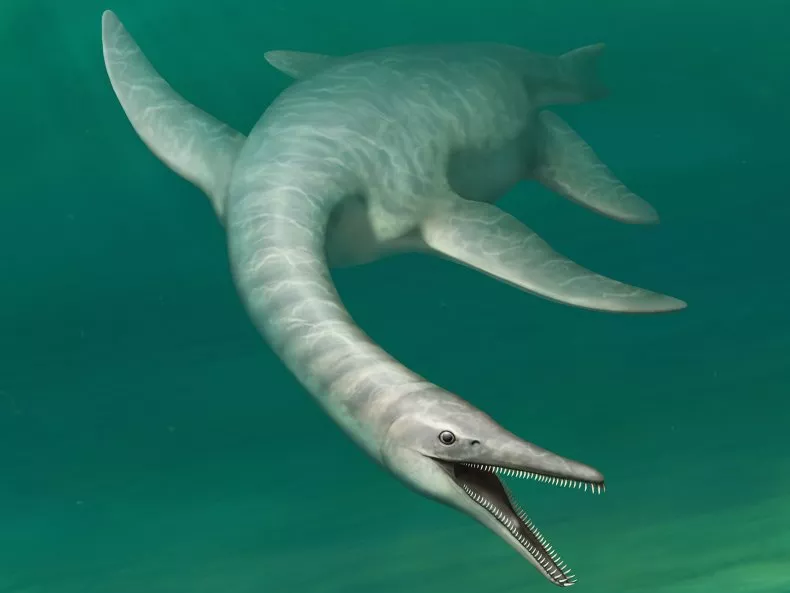Several millions of years ago, a gigantic, long-necked marine reptile cruised through the waters of an old seaway in what is currently Wyoming, whirling its snaky neck back and forth between snapping up fish and other small sea creatures with its crocodile-like jaws.
Paleontologists unearthed the fossils of this serpentine sea monster in 1995 through a dig in the northernmost area of the Pierre Shale, a geological structure from the Upper Cretaceous period (approximately 101 million to 66 million years ago). Unlike the other plesiosaurs, this animal possessed physical traits that distinguished it from the other members of this extinct group of marine reptiles.
In a recent study published online on Sept. 26 in the journal iScience, the authors reported their observations on this newly named species.
When dinosaurs inhabited the Earth over 70 million years ago, the gigantic reptile is assumed to have swum the seas. Serpentisuchops means "snakey crocodile-face," referencing the creature's lengthy, snakey neck and projecting crocodile-like jaws.
Plesiosaurs Long of Neck of History
"Plesiosaurs typically exist in two distinct flavors or morphological forms and have either a long, snakelike neck with a small head or a short neck and along the crocodile-like jaw," according to Doctor Walter Scott Persons IV, the research's main author, and a paleontologist from the College of Charleston in South Carolina. "In this situation, this strange, one-of-a-kind beast is a hybrid between the two," the paleontologist told Live Science.
The scientists studied the animal's fossils for decades, as well as its "beautifully preserved lower jaw, a large amount of its skull, whole neck, vertebrae, the majority of its tail, and some ribs," as per Persons.
There were also 19 teeth identified in the shale-rich region, which Persons defined as "the surface of the moon" or "a trip to Mordor." Only a single tooth remained in the specimen's jaw, whereas the others were fragmented among the bones. Moreover, the prominence of roots in the jaw revealed that the teeth have been from this specific plesiosaur instead of another.

Artist's impression of prehistoric marine reptile, Serpentisuchops. A specimen has been found in Wyoming.
Serpentisuchops Lengthy Lineage
Newsweek reported that Serpentisuchops is a descendant of the plesiosaurs, an extinct class of marine reptiles, but its peculiar anatomy is revolutionizing the scientific understanding of this long-lost ancestry.
Researchers have discovered approximately 100 plesiosaur species, one of the biggest, towering over 50 feet long. The 45-ton creature, known as Predator X, was identified in Svalbard, Norway, in 2009 and is believed to have a jaw four times more powerful than a Tyrannosaurus Rex, according to National Geographic.
The fragment was recovered in a sulfuric stretch of badlands in eastern Wyoming over 25 years and was handed to the Paleon Museum in Glenrock, where it was examined.
The scientists assume that the Serpentisuchops tasted primarily small, speed food like squid and smaller fish. While Serpentisuchops existed, the Western Interior Seaway comprised much of North America's interior. The person told Newsweek, "[Serpentisuchops] may have become extinct due to a contraction in the Western Interior Seaway '' 70 million years ago.
RELATED ARTICLE: Dinosaurs Adapted to Cold Well Enabling Them to Survive the Triassic-Jurassic Extinction That Killed Most Terrestrial Specie
Check out more news and information on Extinction in Science Times.














